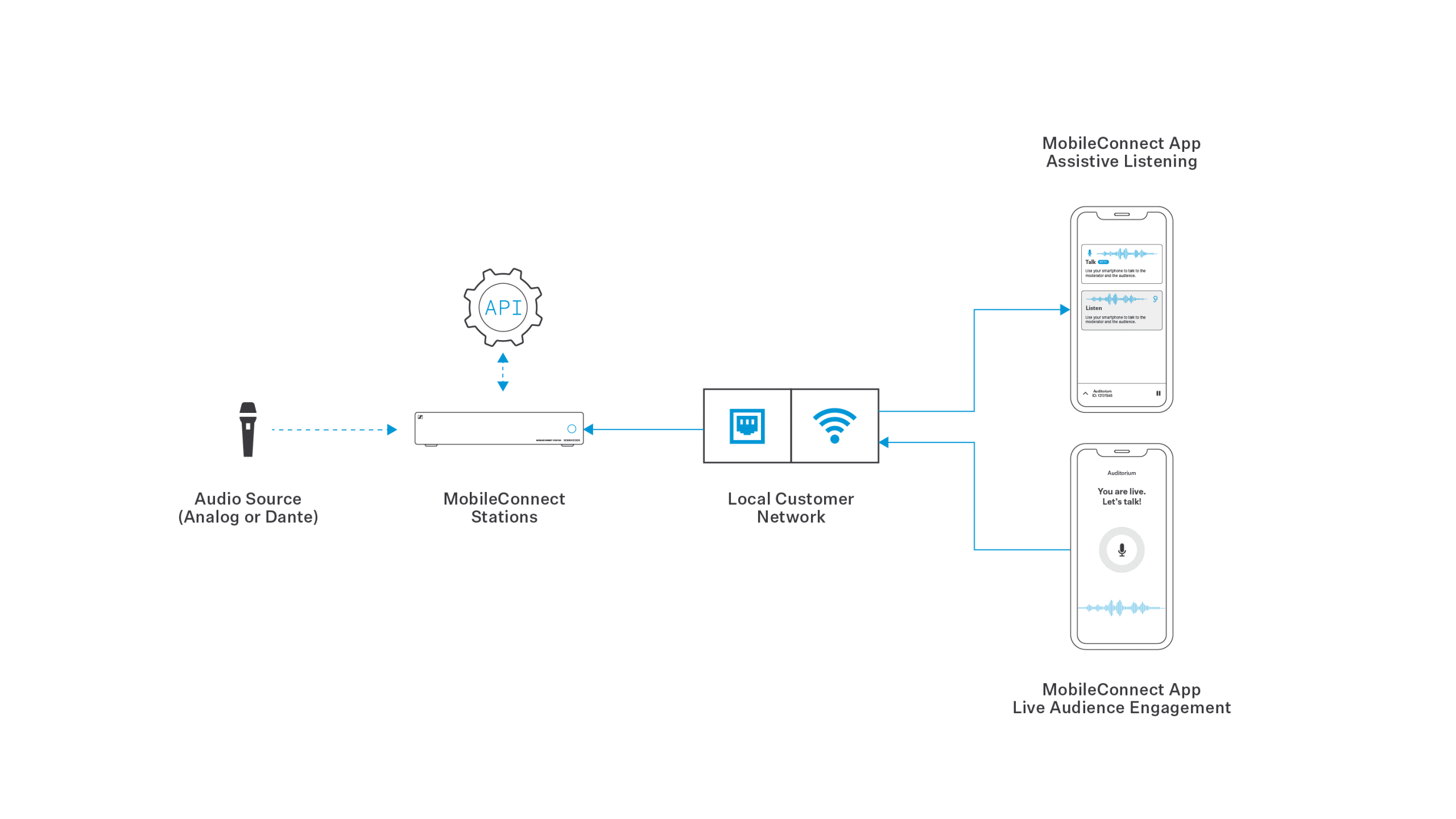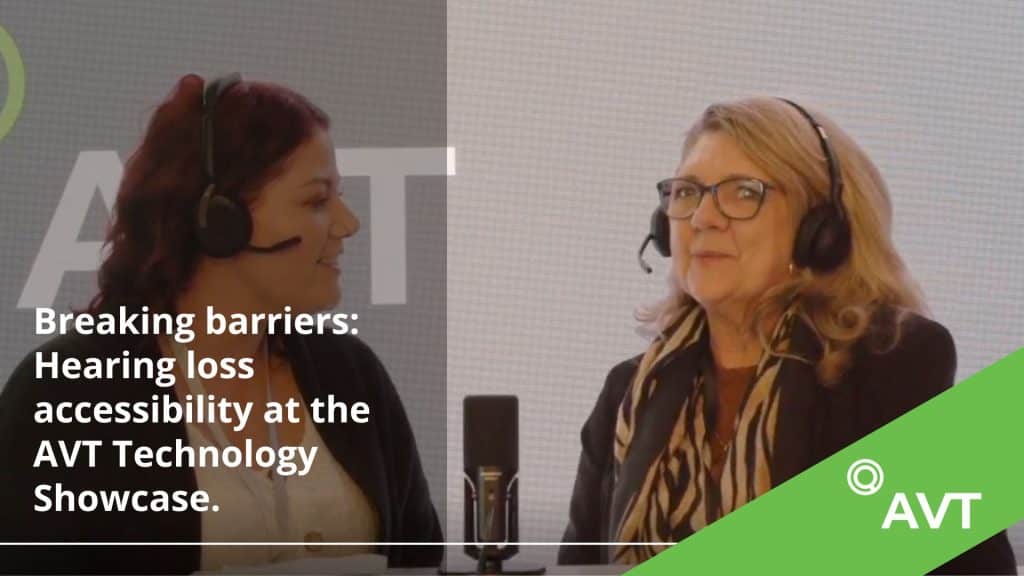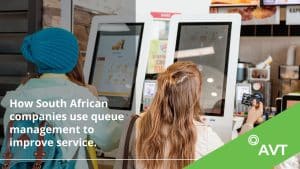When it comes to creating truly inclusive communities, few topics are as important as accessibility for people with disabilities. But for the millions living with this invisible disability, the impact is real—missed conversations, professional hurdles, and feelings of isolation are everyday challenges. With the right technology and awareness, this doesn’t have to be the case.
We recently had the opportunity to speak with Michelle from the National Council of and for Persons with Disabilities (NCPD) at the AVT Technology Showcase 2025. Michelle, who leads the hearing loss division, offered valuable insight into the challenges faced by those with hearing impairments, the NCPD’s ongoing campaigns, and the crucial role of technology in helping people with hearing loss thrive.
Understanding Hearing Loss
![]() Hearing loss often develops gradually. Many people don’t realise anything is wrong until they start missing parts of conversations, struggling in meetings, or feeling increasingly isolated. Even then, they often delay seeking help because of stigma, embarrassment, or a lack of information about what support is available.
Hearing loss often develops gradually. Many people don’t realise anything is wrong until they start missing parts of conversations, struggling in meetings, or feeling increasingly isolated. Even then, they often delay seeking help because of stigma, embarrassment, or a lack of information about what support is available.
In South Africa, around 20 percent of the population experiences some form of hearing loss. That’s more than 12 million people. About 3.3 percent of people aged five and older live with a significant hearing impairment. In the workplace, many of them stay silent about their condition. They may appear to be following along and contributing, but are often missing key details and struggling to keep up.
Most colleagues never notice. Someone might speak clearly and participate in discussions, yet still leave a meeting feeling completely lost. These situations happen every day in offices across the country.
This is why accessible technology matters. When organisations work with the right providers, they can offer practical tools that help people hear clearly, communicate with confidence, and take part fully. Whether it’s through discreet hearing aids, mobile apps, or systems like hearing loops, the right solutions make inclusion possible.
The NCPD’s Mission
The NCPD is committed to supporting people with all types of disabilities, with Michelle’s division focusing on hearing loss—especially for those who experience it later in life. Their mission is to raise awareness, dispel myths, and provide practical support for affected individuals. Michelle highlighted the importance of early hearing tests, the use of hearing aids, and creating environments where people with hearing loss can flourish.
Sennheiser MobileConnect
One of the technologies that aligns closely with the NCPD’s goals is the Sennheiser MobileConnect Station. This modern, wireless system allows high-quality audio to be streamed over Wi-Fi directly to a user’s smartphone via an app, which can be downloaded easily using a QR code. From there, the sound connects to hearing aids or headphones through Bluetooth, making it a practical solution for people who may not yet use hearing aids or who prefer more conventional devices.
AVT installs MobileConnect in universities and educational venues to ensure that students with hearing loss can participate fully, just like their peers. The system even allows two-way communication, so users can respond to lecturers or speakers directly from their phones. It was on display at the AVT Technology Showcase, reinforcing the event’s reputation for presenting cutting-edge alternatives.
For the NCPD, systems like this expand the conversation around accessibility, offering options that feel natural and familiar—especially for younger, tech-savvy users who may still be reluctant to seek traditional support.

This diagram shows how the Sennheiser MobileConnect system works to assist people with hearing loss. An audio source, such as a microphone, connects to the MobileConnect Station. The signal is then routed through a local network (via a laptop or PC) and transmitted over a Wi-Fi network. Users connect to the audio stream using the MobileConnect app on their smartphones, which can then send the sound to Bluetooth-enabled hearing aids or headphones. A QR code simplifies access to the app and stream, making the system user-friendly and accessible in real-time environments like classrooms or auditoriums.

The “Get Together” Campaign: Raising Awareness and Breaking Stigma
A cornerstone of the NCPD’s work is the Get Together campaign, which aims to:
- Dispel common myths and misconceptions about hearing loss
- Encourage people to get their hearing tested early
- Promote the benefits of wearing hearing aids
- Foster a supportive community for those with hearing impairments
Michelle emphasised their awareness-raising and sensitisation sessions, often led by trainers with lived experience of hearing loss, such as Bonita Toy. These sessions help educate the public and create more inclusive spaces.
The Importance of Reasonable Accommodation
A significant part of the NCPD’s work involves responding to enquiries from people with hearing loss who are struggling, particularly in professional settings. Michelle shared that many individuals face challenges in the workplace, especially when their hearing loss is not immediately visible.
For example, in corporate boardrooms, colleagues may not realise someone is using a hearing aid, leading to communication barriers. The NCPD provides information and advocates for reasonable accommodation, ensuring everyone has the tools they need to succeed.
Making Venues Accessible: The Push for Hearing Loops
One of the most pressing accessibility issues Michelle discussed is the lack of venues equipped with hearing loops. Hearing loops (or induction loops) transmit sound directly to hearing aids with telecoils, dramatically improving the listening experience in public spaces.
Michelle explained, “We need to have more venues looped. We need people with hearing aids to know about the telecoil and how it can help them.” The AVT Technology Showcase introduced the NCPD to new suppliers, such as Sennheiser and Bosch, opening doors for greater collaboration and expansion of accessible venues.
Technology as a Game-Changer
The AVT Technology Showcase 2025 was a pivotal event for discovering innovative solutions. Michelle admitted that while she’s not a technology expert, her colleague Candace represents the younger generation’s enthusiasm for tech. The showcase enabled the NCPD to learn about the latest advancements and connect with suppliers who can help bring accessible technology to more people.
Michelle noted, “We can now give more information to people because we are so limited when people come to us and ask for information on technology. This will make it even better that we can give more information and even if we just pass the information onto the person that’s involved.” The NCPD’s role is to empower individuals by providing up-to-date, accurate information, ensuring they have access to the best solutions available.
Real-World Impact: Supporting Individuals in the Workplace
Michelle shared a compelling example of a corporate employee with hearing impairment who faces significant challenges in meetings. Despite his articulate speech, colleagues often overlook his needs because his hearing aid is not visible.
The NCPD’s goal is to bridge this gap by connecting such individuals with the right technology providers and advocating for inclusive workplace practices. By raising awareness and facilitating access to assistive technology, the NCPD helps ensure that no one is left behind.
Building Partnerships for Greater Impact
Collaboration is central to the NCPD’s approach. Their efforts to loop churches and community venues are gaining momentum, thanks to partnerships formed at events like the AVT Technology Showcase. Michelle expressed gratitude for the opportunity to network with technology providers and learn about new products that could benefit their community.
“We don’t sell technology. We don’t do anything. We’re just there to provide the information so that the person asking can get the best,” Michelle explained. This commitment to unbiased support positions the NCPD as a trusted resource for people seeking guidance on accessibility solutions.
The AVT Technology Showcase: Driving Innovation in Accessibility
The AVT Technology Showcase is a premier event in South Africa, bringing together industry leaders, innovators, and organisations to explore the latest advancements in audiovisual and digital signage technology. By hosting open days in major cities, AVT provides a platform for companies and advocates like the NCPD to discover new solutions, collaborate, and drive the conversation forward on accessibility and inclusion.
AVT itself is Africa’s leading audio-visual system integrator, specialising in customised solutions for communication, digital signage, video conferencing, and managed services. Their commitment to innovation and partnership makes the AVT Technology Showcase a key event for anyone invested in the future of accessible technology.
Looking Ahead: Goals and Aspirations
Michelle is optimistic about the future. By expanding their network of suppliers and staying informed about technological advancements, the NCPD aims to offer even more comprehensive support to individuals with hearing loss. Their ultimate goal is to ensure that everyone, regardless of their level of hearing, can participate fully in society—whether in the workplace, places of worship, or public events.
Why Accessibility Matters for Everyone
Accessibility is not just a concern for people with disabilities—it benefits everyone. Venues equipped with hearing loops, for example, provide clearer sound for all attendees. Raising awareness about hearing loss and promoting inclusive practices fosters a more empathetic, connected society.
Conclusion: Join the Movement for Accessibility
Our conversation with Michelle from the National Council of and for Persons with Disabilities at the AVT Technology Showcase highlighted the urgent need for greater accessibility, particularly for people with hearing loss. Through campaigns like “Get Together”, advocacy for hearing loops, and partnerships with technology providers, the NCPD is making significant strides towards a more inclusive world.
If you or someone you know is affected by hearing loss, reach out to organisations like the NCPD for support and information. Together, we can break down barriers and ensure that everyone has the opportunity to thrive.
Want to Learn More or See a Demo?
If you’re interested in hearing loops, MobileConnect, or other accessibility tools, we’d be happy to talk. Get in touch with us to book a demo or speak with one of our experts about your needs.
Frequently Asked Questions
What is a hearing loop and how does it work?
A hearing loop, also known as an induction loop, is a special type of sound system designed for people with hearing aids or cochlear implants equipped with a telecoil (T-coil). The system transmits sound directly to the hearing aid, cutting out background noise and making speech much clearer. It consists of a microphone to pick up sound, an amplifier to process the signal, and a loop cable installed around the perimeter of a room or area, which emits a magnetic signal picked up by the hearing aid.
What technology is needed to install a hearing loop system?
To install a hearing loop, you need three main components: a microphone (to capture sound), an amplifier (to process the audio signal), and a loop cable (a wire installed around the desired area to transmit the magnetic signal). The loop cable can be installed under carpets, overhead, or along baseboards, depending on the venue. The system should be clearly marked with the international hearing loop symbol so users know it is available.
Where can hearing loops be used?
Hearing loops can be installed in a wide range of locations, including churches, theatres, meeting rooms, shops, banks, reception desks, public transport, and even at home for use with televisions or other audio devices. They are especially valuable in venues where background noise or distance from the sound source can make hearing difficult for people with hearing loss.
Do all hearing aids work with hearing loops?
Most modern hearing aids and cochlear implants are compatible with hearing loops, provided they have a telecoil (T-coil) feature. However, the telecoil may not be activated by default, so users should check with their audiologist to ensure this feature is enabled.
Why are hearing loops important for accessibility and inclusivity?
Hearing loops provide direct, clear sound to hearing aid users, reducing background noise and making it easier to understand speech in public spaces. This technology supports true inclusivity by ensuring that people with hearing loss can participate fully in meetings, events, and daily activities, fostering equal access and reducing communication barriers.





